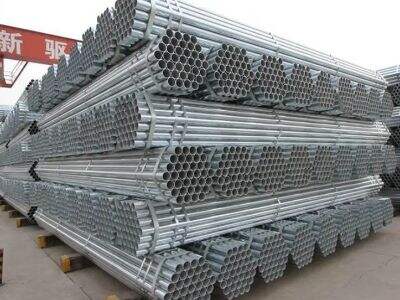How Steel Pipe is Protected in Each Method
Now that we know the two types of galvanizing methods: hot-dip and cold-dip, let’s see how each process protects steel pipes from rust.
The hot-dip galvanising process begins by cleaning the steel pipes with a detergent with the objective of removing dust particles. Then the pipes are dipped into hot liquid zinc, which is around 450 degrees Celsius. This heat forms a tight metallurgical bond between the steel and the zinc, resulting in a tough coating. After the pipes are coated, they are cooled and tested to ensure that they are ready for use.
Cold-dip galvanizing, too, begins with pipe cleaning. Then the pipes are submersed in a liquid containing zinc particles. It’s called electroplating, and a thin coating of zinc is applied. Cold-dip galvanizing is quicker than hot-dip galvanizing, but it does not create a thick or protective layer of zinc.
Costs When It Should Be Cold (If Cold) vs. Hot Dip Galvanizing
When it comes to numbers, hdg steel pipe may initially appear more costly simply because it requires higher heat and special equipment. But in the end, hot-dip galvanizing is typically better because the coating can last longer and doesn’t require as much maintenance.
Cold-dip galvanizing may be less expensive at the outset, but the coating is thinner and may not keep the pipes safe enough. That might just mean spending more later to have these devices repaired or replaced. Cold-dip galvanized pipes might also bequeath to re-gained more regularly than hot-dip galvanized pipes.
Advantages and Disadvantages of Each Technique
There is a lot to like when it comes to hot-dip Galvanized Steel Pipe, such as the very strong protection against rust and extreme strength. The thick zinc coating repels moisture, which inhibits rust. But hot-dip galvanizing is more expensive and takes longer.
Cold-dip galvanizing is faster and cheaper initially, and, as a result, it is a common choice for some projects. However, a thin layer of zinc might not provide the best protection of the pipes in more difficult environments, and they could rust sooner. Cold-dip galvanized pipes may also require closer attention and more frequent recoating.
Selecting the Right Steel Pipe for Your Applications
So when the choice is cold-dip or hot dip galvanized steel pipe, consider the long-term use and the indispensable durability you are looking to construct, and choose according to the environment the tube will be used, the lifespan of your tubes, and how much maintenance you’re willing to invest into the structure. Hot-dip galvanizing should be used when strong protective coats are needed, while cold-dip galvanizing might be optimal for less important uses or when only short-term protection is required.
Ultimately, the best way to choose the right galvanizing method for your steel pipes? What do you need, and what is your budget? Hot-Dip Galvanized: If you want a fixture that will last a long time and requires minimal maintenance, hot-dip galvanized is probably your best choice. If cost and speed are more of a priority for the process, cold-dip galvanizing may be effective.


